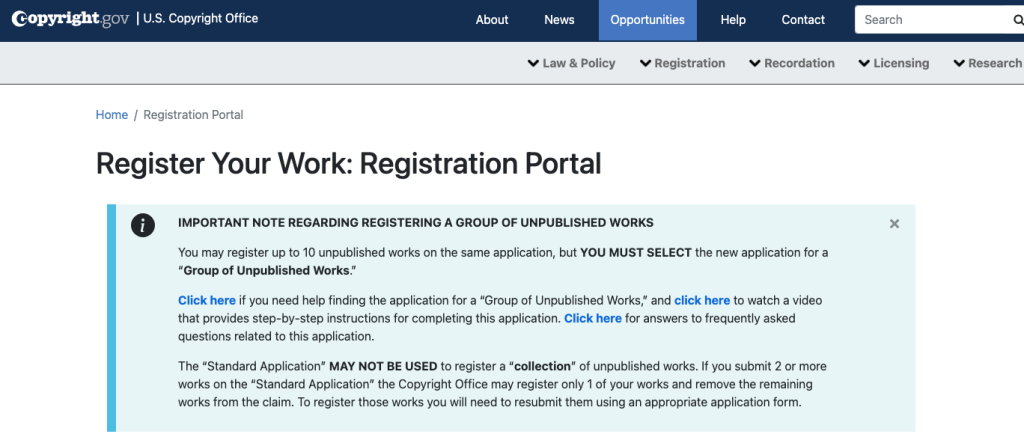When you run a business, your logo and brand name are the two things that create a distinctive identity for your brand.
So safeguarding and protecting your online business name and logo is extremely crucial. This will help you reserve exclusive commercial rights to use them for your business.
By doing that, you can prevent any other entity from using your logo or name. So you can rest assured that your logo or brand name isn’t copied, reproduced, distributed, or displayed anywhere without your permission.
This is extremely important to avoid any confusion amongst your users and maintain your brand’s distinctiveness.
And if in any case, a third party goes against your rights and uses your logo or brand name, you can have the legal rights to take action against them.
Now the question is what steps do you take to trademark and copyright your online business name and logo? In this post, we’ll discuss what steps you can take to trademark and copyright your business name and logo.
So let’s get started. But before that, let’s understand the difference between trademark and copyright.
Table of Contents
Trademark vs Copyright: What is the Difference?
Many people get confused between the words trademark and copyright. If you’re one of them, this section will help you clear your doubts.
Copyright is basically protecting anything original. So you can copyright things that you have created from scratch without imitating another existing version of it. It primarily protects the rights of people who create original work in the fields of literature, drama, technology, music, etc.
Trademark, on the other hand, protects the use of your entities. This can be in the form of a logo, slogan, product name, or anything similar.
Now let’s look at some effective ways to trademark and copyright your online business name and logo. We’ll look at both these sections separately.
How to Trademark Your Online Business Name and Logo
Trademarking your business is extremely crucial if you want to maintain your brand identity and establish a unique presence in the market.
By having a trademark, you can ensure that your entities are protected from any third-party use. But many of you aren’t sure how to do that. In this section, let’s look at this in detail.
1. Search for Availability
To apply for trademarks it’s important to ensure that the name and logo you have chosen for your business don’t exist in the registered trademark list.
Always remember that to apply for a trademark your entity should have a sole identity. There can’t be an existing presence already. So before applying for trademarks, make sure to conduct comprehensive research to know that yours is the only entity available.
If there is another entity similar to yours and you apply for a trademark, then your application might be rejected. Sometimes you might even have to face legal consequences. To avoid any such complications, start the entire process with thorough research.
2. Select a Strong Mark
Your trademark application can be successful only when your business name and logo are unique on its own. Having a unique logo and name will not only help you stand out in the market but will also help you go through a successful trademark application process.
Ideally, strong trademarks have two categories. The first one is arbitrary and the second one is fanciful. If your brand name is in the common form but is used in an uncommon manner then it will fall in the arbitrary category.
If you have entirely invented a new word then it will fall in the fanciful category. So think of the categories you want your entity to fall under and then come up with something unique for your business.
Try not to use words that directly describe your products and services. This increases the chances of commonality with other existing names.
3. Identify your Class
The next important step is to clearly identify the class or category in which your business falls. When you file for a trademark they will register your request based on the category or class of your business.
This makes it extremely important to classify your business properly based on the services or products you offer. Without that, it might be a struggle to get registered.
4. File for Trademark Application
Once you have completed the above steps, it’s time to file for the trademark application. You will have to do that through a proper government agency. So based on the location you’re applying for your trademark, identify the agency you need to approach for the process.
For example, if you’re based in the US, the process will be done through the United States Patent and Trademark Office (USPTO). This will differ based on which part of the globe you’re located in.
Don’t forget to include your business details correctly to ensure that the process is successful. You should also include a high-quality image of your logo if you’re applying for a design mark. You also need to select the intent of the use. There can be two intents of using your logo or name.
The first one is “Use in Commerce”. You can select this option if you’re already using your entities for any kind of commercial purpose.
The second one is “Intent to Use”. If you’re applying for the trademark now and intend to use your entities in the future, then you’ll have to choose this option.
5. Respond to Office Actions
It’s not always necessary that your application is accepted in the first go. You might have to face rejections too. Sometimes the officials might want more information and might request action from your end.
At other times, they might also raise concerns or objections to your application. There can be several reasons for that. It can be due to distinctiveness, conflicts, or any other similar matters. Whatever may the reason be, it’s important that you are prompt with your responses.
6. Publication and Opposition Period
Once you clear all their doubts, concerns, and queries, your application will be forwarded for opposition. During this time, you might face third-party opposition if they believe that it can cause conflict with their existing marks.
Be prepared for such times. If someone believes that your brand identity is not unique or overlaps with their own trademark, they may object to your application process. You’ll then receive a formal objection from a third party. This is generally filed in the trademark office. To make these objections stronger, individuals or businesses submit proof of evidence justifying their stand.
In such a situation, it can be helpful for you to engage a trademark attorney. They can help you come up with stronger evidence to support your case. Meanwhile, do your best to collect evidence to make your case even stronger.
Remember, it’s not always mandatory to fight these cases. You can also negotiate with these third parties and come to a conclusion if you want to avoid indulging in legal matters.
7. Wait for Trademark Office Decision
Now it’s time to wait for the trademark office’s decision. The office will now review all the oppositions raised by different parties. At the same time, it will also review the responses you have submitted.
Based on this review they will either reject or accept your application for registering your trademark. Your trademark registration might be refused if the opposition has a stronger case. But if your responses can satisfy the officials they will proceed towards the registration.
Remember, it’s not enough to register for a trademark just once. You need to periodically renew it to continue owning the trademark rights.
Steps to Take to Copyright Your Business Name and Logo
Registering your online business entities for copyrights is as important as it is for trademark registration. Luckily registering for copyrights is a lot easier than registering for trademarks.
If you too want to have copyrights for your business entities, this section is for you.
In this section, we’ll look at a few steps that you can take when you’re considering copyrights for your business name and logo.
1. Check for Originality
As mentioned above, copyrights are granted only to original works of authorship. Having copyrights for your work is like having an award for what you have created.
This is especially true if you’re someone in the creative field. Availing copyrights can help you build a strong portfolio and demonstrate yourself as a creative mind.
However, if there is any similarity between your work and existing work, then you may fail to qualify for it. The worst thing is that it might even make you face legal consequences for copyright infringement. So before applying for these rights, you need to ensure that your work is original in all senses.
2. Work on Agreements
A lot of times, businesses hire creative minds to design their logo or come up with a name that resonates with the target audience. And that is absolutely okay.
For instance, if you want to start your own clothing brand and are in need of a creative logo for your business, you don’t have to create something on your own to avail of copyrights. You can apply for it even when you have hired someone to do the job for you.
You just need to ensure that you have worked on creating proper agreements clearly mentioning that work is considered to be ‘work for hire’ and that you own the copyrights.
This can help avoid conflicts, misunderstandings, and legal problems.
3. Register for Copyright
The next step is to register for copyright. Ideally, once you apply for copyright it is automatically granted to you. But it’s also important that you register your copyright with relevant copyright offices.
For example, if you run your business in the US, then you’ll have to register with the U.S. Copyright Office.
Based on your location of business, look for the relevant copyright office and register your copyright.
You can apply for it online. Just visit the Electronic Copyright Office (eCO) online portal and recreate an account. Here under the Copyright Registration section, find the standard application.

Now fill out this application with all relevant information about your business. You will then have to pay a small fee. Once you do that, you will receive an email confirmation stating that your registration process has been successfully completed.
4. Monitor and Enforce
Once you have registered it, it’s time to monitor the use of your copyright material. Look for any unauthorized use online. Keep a strict eye out for any third-party activities that involve using your materials without your knowledge.
This might be using your materials on their own products, using them for their content, etc. If you spot any such activities you have full right to take legal actions against them. You can also choose to send a cease-and-desist letter to them.
But it’s not always important to take legal action. You can also politely reach out to them and ask them to take your materials down.
Final Words
In the era of digitalization, it has become very easy to share information. This has helped people stay informed at all times. However, the downside of this ease of information sharing is the increased risk of unauthorized copying and imitating.
By registering for trademarks and copyrights you can safeguard your entities from such practices.
So if you have set up an online business, make sure you protect your entities by registering for trademarks and copyrights.


